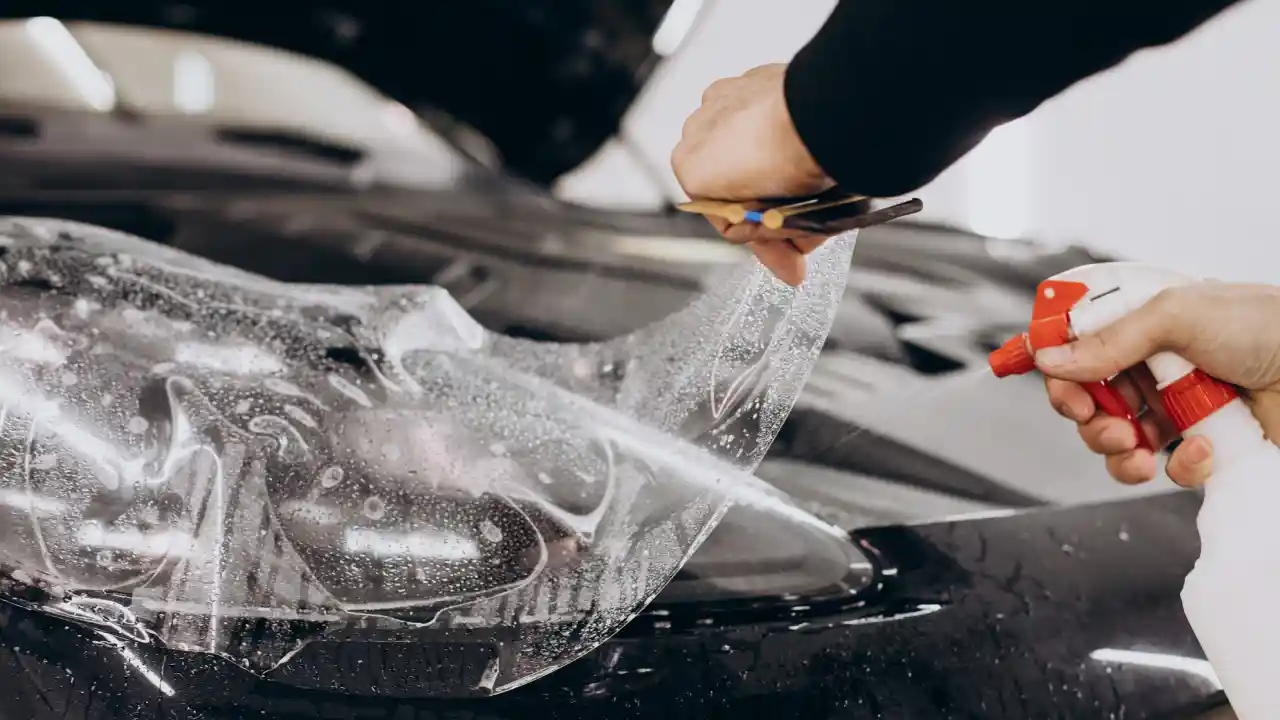Modern vehicles face an increasingly hostile environment of road debris, environmental contaminants, and daily wear that can quickly diminish their appearance. Paint Protection Film (PPF) promises to defend against these threats, but with installation costs often reaching thousands of dollars, many car owners wonder whether this invisible shield justifies its premium price tag. Let’s explore the science, benefits, and practical considerations behind this advanced paint protection technology.
Understanding Paint Protection Film Technology
Think of Paint Protection Film as a sophisticated shield, similar to the screen protector on your smartphone but engineered specifically for automotive applications. Modern PPF consists of multiple layers of thermoplastic urethane, each serving a specific protective function. The outer layer provides resistance against environmental damage and UV radiation, while deeper layers offer impact absorption and self-healing properties that allow minor scratches to disappear with heat application.
The Science Behind the Protection
The molecular structure of PPF creates a remarkable combination of flexibility and strength. When impact occurs, the material absorbs and disperses the energy across its surface, preventing damage to the underlying paint. This same structure enables the self-healing properties through a combination of heat-activated polymers and elastic memory characteristics. When exposed to heat, either from the sun or deliberately applied, these polymers return to their original position, effectively erasing light scratches and swirl marks.
Real-World Protection Capabilities
Paint Protection Film excels at preventing damage from road debris, rock chips, bug acid, bird droppings, and other common hazards. The film’s thickness, typically between 6 and 8 millimeters, provides substantial impact protection while remaining virtually invisible when properly installed. Areas particularly vulnerable to damage, such as front bumpers, hoods, and side mirrors, benefit most from this protection, though many owners opt for full-vehicle coverage for comprehensive protection.
Long-Term Value Consideration
Evaluating PPF’s worth requires considering several factors beyond initial cost. Modern vehicles often feature complex paint finishes with pearl or metallic effects that prove extremely expensive to repair or repaint. A quality PPF installation can protect this investment for up to a decade, potentially saving significant repair costs over time. Additionally, vehicles with preserved paint typically command higher resale values, particularly in the luxury and sports car segments where appearance significantly impacts value.
Installation Quality Matters
Professional installation plays a crucial role in PPF performance and longevity. The process requires extensive preparation, including thorough paint decontamination and correction of any existing imperfections. Installers must precisely cut and position the film to ensure proper coverage while maintaining a natural appearance. Edge sealing and proper post-installation care prove essential for preventing lifting or yellowing over time.
Unlike simpler protection methods, PPF installation demands significant expertise and specialized equipment. Proper installation typically requires several days, with controlled environment conditions and meticulous attention to detail. This complexity contributes to the higher cost but proves essential for achieving optimal results and longevity.
Common Misconceptions Addressed
Many potential buyers express concerns about PPF yellowing or degrading over time, based on experiences with older products. Modern premium films incorporate advanced UV inhibitors and superior adhesives that resist yellowing and maintain clarity for many years. Some manufacturers now offer warranties extending up to 10 years, demonstrating confidence in their products’ durability.
Another common misconception involves PPF’s impact on paint appearance. Quality modern films enhance rather than diminish paint depth and gloss, with some variants offering specific finish characteristics like enhanced gloss or satin effects. The film’s optical clarity allows the true paint color and finish to show through while adding an additional layer of depth to the appearance.
Maintenance Considerations
While PPF significantly reduces maintenance requirements compared to unprotected paint, it doesn’t eliminate them entirely. Regular washing helps prevent contaminant buildup along edges and seams, though the hydrophobic properties of most films make cleaning easier. Owners should avoid harsh chemicals and high-pressure washing near film edges, though normal car wash services typically pose no issues.
The self-healing properties of modern PPF can address minor scratches and swirl marks, but significant damage may require professional attention or section replacement. However, replacing a damaged section of film proves far less expensive than repairing and repainting damaged areas of vehicle paint.
Cost-Benefit Analysis
PPF represents a significant initial investment, with full vehicle coverage often exceeding $5,000 for larger vehicles or premium installations. Partial coverage focusing on high-impact areas typically ranges from $1,500 to $3,000 depending on vehicle size and complexity. However, when considering the cost of paint damage repair, particularly on modern vehicles with complex finishes, PPF often proves economically justified for vehicles maintained for several years.
Environmental factors influence the value proposition significantly. Vehicles regularly exposed to harsh conditions, extensive highway driving, or industrial environments benefit most from PPF protection. Urban environments with high construction activity or frequent road work also increase the likelihood of paint damage that PPF could prevent.
Making an Informed Decision
Consider your specific circumstances when evaluating PPF investment. Factors including vehicle value, intended ownership duration, driving conditions, and personal preferences regarding appearance maintenance all influence the decision. New vehicle buyers often find PPF most valuable, as installation on pristine paint provides optimal results and maximum benefit duration.
For many owners, partial coverage of high-impact areas offers an excellent compromise between protection and cost. This approach focuses protection where damage most commonly occurs while reducing initial investment. Some owners later expand coverage based on experience and observed benefits.
Paint Protection Film represents a significant advancement in vehicle paint protection technology, offering benefits that extend beyond simple damage prevention to include appearance enhancement and value preservation. While the initial investment proves substantial, the combination of protection, convenience, and potential cost savings over time makes PPF worthy of serious consideration for many vehicle owners. Understanding both the technology’s capabilities and limitations helps ensure satisfaction with this significant investment in vehicle protection.
















Add Comment